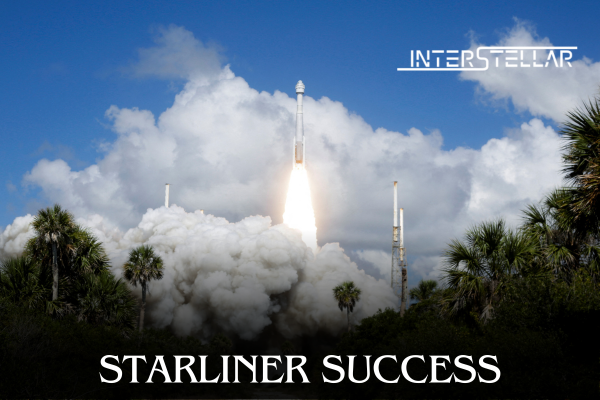Boeing’s new Starliner capsule completed its first crewed flight to orbit on Wednesday. This significant milestone in the aerospace company’s history comes after many delays and aims to heighten competition with Elon Musk’s SpaceX.
The CST-100 Starliner, carrying astronauts Barry “Butch” Wilmore and Sunita “Suni” Williams, launched from Cape Canaveral Space Force Station. It was propelled by an Atlas V rocket from the Boeing-Lockheed Martin joint venture, United Launch Alliance (ULA).
Journey to the ISS
The capsule is headed for the International Space Station (ISS), following years of technical issues and a successful 2022 uncrewed test mission. The spacecraft lifted off with the rocket’s engines roaring to life, sending it into orbit under clear skies from Florida’s Atlantic coast.
Four minutes into the flight, the rocket’s upper stage separated, followed by Starliner’s separation from the second stage. The spacecraft then used its onboard thrusters to propel itself into orbit, beginning its 24-hour journey to the ISS, which orbits 250 miles (400 km) above Earth.
Competition with SpaceX
Boeing’s Starliner, funded by NASA, is set to compete with SpaceX’s Crew Dragon capsule. Since 2020, Crew Dragon has been NASA’s only vehicle for sending ISS crew members to orbit from U.S. soil. NASA Administrator Bill Nelson described the mission as a significant milestone for the agency.
This mission is a crucial test flight before NASA certifies Starliner for regular astronaut missions. Once in space, Starliner must execute precise docking maneuvers with the ISS, stay docked for about eight days, and then return the astronauts safely to Earth. Mark Nappi, Boeing’s Starliner program chief, expressed pride in the successful launch after overcoming many obstacles.
Overcoming Challenges
The mission’s success follows multiple delays. The first two crewed launch attempts were canceled at the last minute due to technical issues. A May 6 countdown was halted two hours before liftoff, and another attempt on the previous Saturday was stopped less than four minutes before launch due to a launchpad computer glitch.
Experienced Crew
The Starliner crew consists of veteran NASA astronauts. Wilmore, 61, a retired U.S. Navy captain and fighter pilot, serves as commander. Williams, 58, a former Navy helicopter test pilot, is the pilot. They have spent a combined 500 days in space over two ISS missions each.
Boeing’s Space Ambitions
Boeing, which has faced challenges with its commercial airplane operations, particularly the 737 MAX jetliners, needs a success in its Starliner venture. The program, part of a $4.2 billion contract with NASA, is years behind schedule and over budget. Boeing aims to provide a reliable second option for NASA to transport astronauts to the ISS.
Starliner will compete with SpaceX’s Crew Dragon as part of a new generation of privately built spacecraft. Both are designed to fly astronauts to low-Earth orbit and potentially the moon under NASA’s Artemis program. SpaceX’s Crew Dragon has already completed nine NASA astronaut missions to the ISS and four private customer missions.
Boeing plans to build two Starliner capsules for NASA astronaut missions and possibly more for private spaceflight, depending on commercial demand. Future demand could be driven by plans from companies like Jeff Bezos’ Blue Origin to develop privately run space stations, which NASA is funding to replace the ISS by 2030.
Wilmore and Williams will join the ISS’s current seven-member crew before returning to Earth with a parachute and airbag-assisted landing in the U.S. Desert Southwest, marking a first for a crewed NASA mission.





